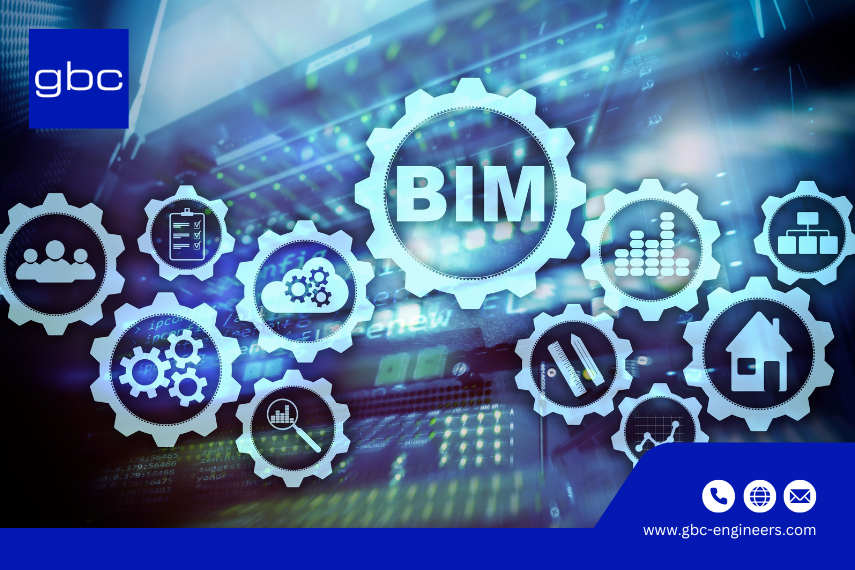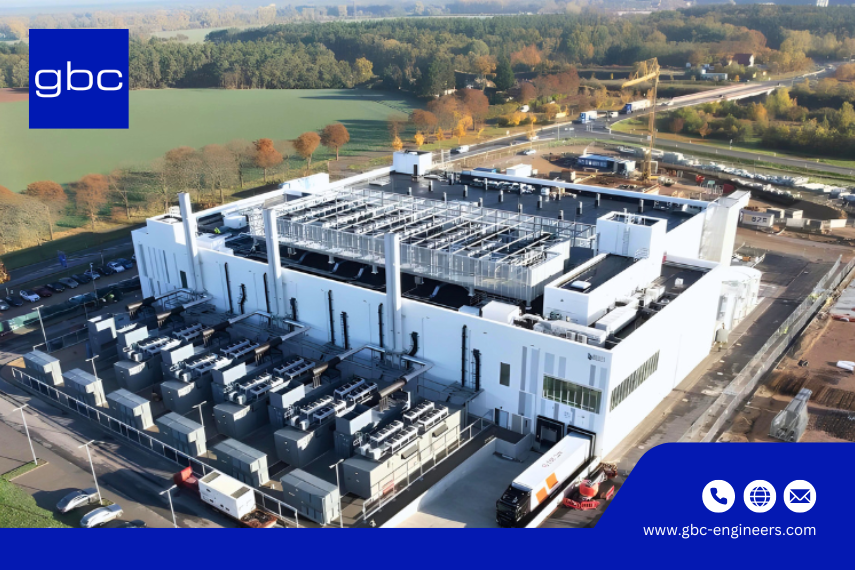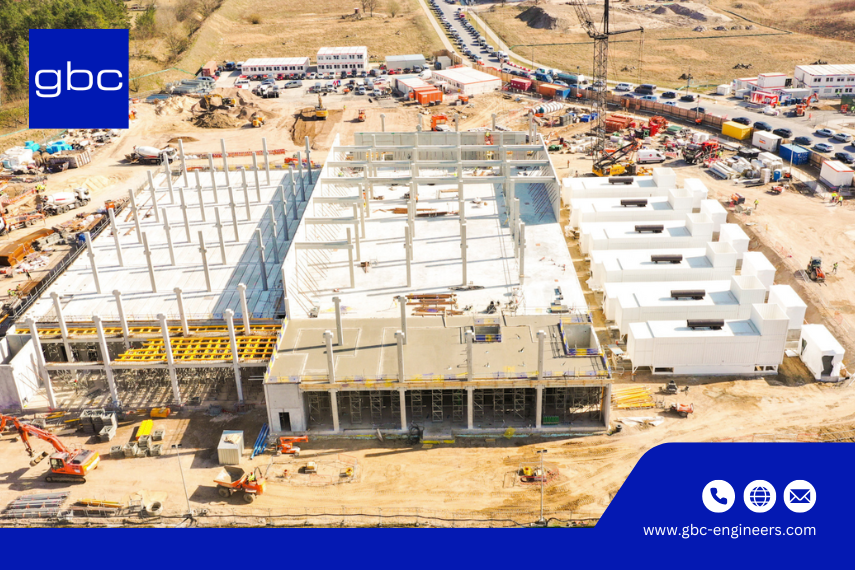Building Information Modeling (BIM) has become a cornerstone in the architecture, engineering, and construction (AEC) industry. As we move further into 2025, BIM continues to evolve beyond 3D modeling—embracing technologies like AI, digital twins, cloud platforms, and sustainability analytics to reshape how we design, construct, and manage buildings. This article of gbc engineers explores the latest trends, definitions, and benefits of BIM for architects and engineers in 2025.
What is BIM? Definition and Key Concepts
BIM (Building Information Modeling) is a digital process that represents the physical and functional characteristics of a building throughout its lifecycle. From concept and design to construction and facility management, BIM acts as a centralized source of information and collaboration.
According to the international standard ISO 19650, BIM enables consistent and structured data sharing across disciplines, improving outcomes in terms of time, cost, and sustainability.
Read More: What is Data Center Design? 3 Critical Considerations for 2025 – gbc engineers
Key Concepts of BIM
Digital Representation
At its core, BIM creates digital content that visually and semantically represents every component in a building—from architectural features like walls and windows to complex MEP and structural systems. These 3D models are not just visualizations but intelligent digital products, containing information that supports informed decision-making across the project lifecycle.
Information-Rich Modeling
Each BIM element holds metadata, including material specifications, manufacturer details, maintenance schedules, energy performance, cost, and more. This makes the model a powerful single source of truth (SSOT).
Lifecycle Management
Unlike traditional CAD tools, BIM supports the entire building lifecycle, from ideation to demolition:
- Conceptual Design
- Detailed Design and Engineering
- Construction Planning and Execution
- Facility Operations and Maintenance
- Renovation or Deconstruction
This holistic, information-driven process reduces waste, streamlines workflows, and enhances sustainability through efficient material use and energy analysis.
Dimensions of BIM
BIM is categorized into different dimensions based on the type of information it integrates:
- 3D BIM – Visual modeling of the physical structure
- 4D BIM – Scheduling and time management (construction phasing)
- 5D BIM – Cost estimation and financial planning
- 6D BIM – Sustainability and energy performance analysis
- 7D BIM – Facilities management and asset lifecycle
BIM Maturity Levels Explained
Understanding the levels of BIM maturity helps organizations benchmark their digital transformation:
Level 0 – 2D CAD only, no collaboration
Level 1 – Basic 3D models with limited information sharing
Level 2 – Collaborative 3D modeling with shared information formats (e.g., IFC)
Level 3 – Full integration in a Common Information Environment (CIE)
By 2025, many countries—including the UK and parts of the EU—have mandated Level 2 or 3 BIM for public projects, signaling a shift toward total digital integration.
Open BIM vs. Closed BIM: What’s the Difference?
Choosing between Open BIM and Closed BIM is a key strategic decision.
Open BIM: Uses open standards (like IFC and BCF) to ensure software interoperability. Ideal for large, multi-disciplinary projects.
Closed BIM: Uses tools from a single software vendor (e.g., Autodesk Revit ecosystem). Easier coordination but less flexible.
Open BIM is gaining traction in 2025 due to its scalability, transparency, and collaborative potential.
Trends in BIM 2025: What’s New?
BIM in 2025 is smarter, faster, and more connected. Here are the top BIM technology trends shaping the industry:
Digital Twins
Digital twins are dynamic, real-time virtual models that mirror the physical characteristics and behavior of built environments. By integrating building information modeling (BIM) with real-time data, digital twins enable a comprehensive and continuously evolving view of a building or infrastructure.
These virtual models are designed to simulate the life of a structure, offering insights into its performance and operations.
Artificial Intelligence (AI)
Artificial Intelligence (AI) is playing a key role in providing powerful capabilities to building information modeling (BIM) by automating repetitive tasks like clash detection, cost estimation, and energy modeling.
Tools like Spacemaker (by Autodesk) and test-fit solutions are streamlining early project decisions, enabling the team to focus on more critical aspects of the project and development process. This advanced AI integration increases efficiency, reduces errors, and accelerates the overall project timeline.
Cloud-Based Collaboration
Platforms like Autodesk Construction Cloud, Trimble Connect, and BIM 360 allow teams to collaborate in real-time from anywhere in the world. In 2025, cloud-native BIM is now the industry norm.
Sustainability in BIM
Tools such as One Click LCA and Insight help architects design net-zero buildings by analyzing carbon footprint, material lifecycle, and energy performance during early design phases.
AR/VR Integration
Augmented and Virtual Reality tools integrated with BIM offer immersive walkthroughs, helping clients and stakeholders better understand the final product before construction begins.

Read More: Top 5 Data Center Technologies in 2025: Emerging & Networking Trends – gbc engineers
Benefits of BIM for Architects and Engineers
BIM offers measurable benefits for professionals at every project stage:
- Design Optimization: Create accurate, efficient models with fewer revisions and better coordination across disciplines.
- Time & Cost Savings: Automated documentation, 4D scheduling, and clash detection reduce rework and save money.
- Sustainable Design: Integrate environmental data and energy simulations to support green building certifications (e.g., LEED, BREEAM).
- Client Engagement: Use AR/VR for presentations, improving communication and stakeholder buy-in.
- Lifecycle Asset Management: Provide owners with a comprehensive digital twin for maintenance and upgrades.
Real-World BIM Applications in 2025
Here’s how BIM is making a difference in 2025 across project types:
- High-rise developments: Optimizing space and services through parametric modeling.
- Data centers: Coordinating complex MEP systems in fast-track construction timelines.
- Hospitals and schools: Using BIM to meet strict health and safety standards.
- Heritage renovations: Laser scanning and point clouds integrated with BIM for restoration accuracy.
gbc engineers’s - Your trusted BIM partner
At gbc engineers, we go beyond traditional engineering by integrating cutting-edge Building Information Modeling (BIM) into every stage of the construction lifecycle. With deep expertise in structural engineering and digital design, we deliver smarter, faster, and greener solutions tailored to the evolving needs of today’s AEC industry.
Why Choose gbc engineers for BIM?
Extensive BIM Experience
Our track record spans from complex data centers in Germany to sustainable industrial facilities in Southeast Asia. We support both public and private sector clients with tailored BIM solutions, ensuring smooth coordination across disciplines and project phases.
Global Perspective, Local Expertise
With active projects in Germany, Singapore, and Cambodia, we are well-versed in navigating international BIM standards such as ISO 19650, while adapting to the specific regulatory frameworks of each region.
Comprehensive BIM Capabilities
We offer full-spectrum BIM services—from early-stage 3D modeling to 4D scheduling, 5D cost estimation, and 6D asset management. Our expertise covers all levels of development (LOD 100 to 500), ensuring robust digital project delivery.
Commitment to Sustainable Design
Aligned with our mission to support the green transition in construction, we leverage BIM to analyze energy performance, reduce material waste, and facilitate certification processes such as LEED, BREEAM, and DGNB.
Trusted by Global Clients
Leading organizations such as Vantage Data Centers, Khmer Beverages, and Pepperl+Fuchs have relied on our BIM expertise to streamline complex developments, reduce risk, and optimize outcomes.
Explore our projects: Projects - gbc engineers
Proven BIM Expertise – Featured Projects
BER21 Data Center
Location: Mittenwalde, Berlin-Brandenburg, Germany
Gross Floor Area: 14.900 sqm
Services:
- Structural Design, work stage 4-6 (LP4-6)
- Workshop Design for Precast Elements
- BIM Services
Segment: Data Centers
Structural detailed design for the BER21 data center in Mittenwalde, Berlin. The low-rise design consists of two data centers BER21 A1 and A2. The data center campus is a 4.5-hectare site with a master plan for the construction of two buildings.

Explore this project now: BER21 Data Center - gbc engineers
FR8.2 Data Center
Location: Frankfurt, Germany
Gross Floor Area: 26.000 sqm
Services
- Structural Design, work stage 4-6 (LP4-6)
- Workshop Design for Precast Elements
- BIM Services
Segment: Data Centers
The new data center, FR8.2, is located at 139 Lärchenstrasse in Frankfurt, Germany, directly across from the existing FR4 data center. The main building, including the "back of house" area, measures approximately 86 meters in width and 150 meters in length, standing four stories tall.
The project is divided into three phases, covering the right, middle, and left sections. It specifically focuses on the middle section (Data Center FR8.2), which has dimensions of around 57.5 meters in width and 84.0 meters in length, spanning four stories.

Explore this project now: FR8.2 Data Center - gbc engineers
BER13 Data Center
Location: Uferring, Ludwigsfelde, Berlin, Germany
Gross Floor Area: 14.900 sqm
Services:
- Structural Design, work stage 4-6 (LP4-6)
- Workshop Design for Precast Elements
- BIM Services
Segment: Data Centers
Structural detailed design for the BER13 data center in Uferring, Ludwigsfelde, Berlin. The object is a new low-rise data center constructed by Vantage Data Centers. The low-rise design consists of a data center, referred to as BER13 in this example, and a yard.

Explore this project now: BER13 Data Center - gbc engineers
Ready to Future-Proof Your Data Center?
Partner with gbc engineers to design a facility that delivers performance, reliability, and long-term value.
🌐 Visit: www.gbc-engineers.com
🏗️ Explore Our Services: Services - gbc engineers
Conclusion
In 2025, Building Information Modeling is more than just a modeling tool—it’s a strategic framework for digital construction. Whether you're an architect, engineer, developer, or public sector planner, adopting BIM is crucial to staying competitive, compliant, and innovative.
By leveraging AI, cloud computing, sustainability analytics, and Open BIM practices, professionals can drive better outcomes for people, projects, and the planet.
As the construction industry continues to evolve, gbc engineers remains dedicated to leveraging the latest BIM advancements to deliver exceptional outcomes for our clients.
Whether you are working on a new construction project or enhancing an existing building, you can trust gbc engineers to be your reliable partner in navigating the complex world of BIM, ensuring your project's success from start to finish.